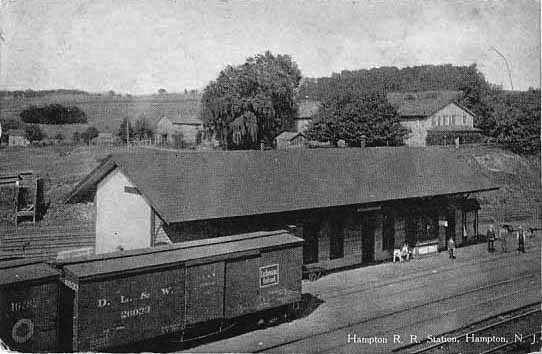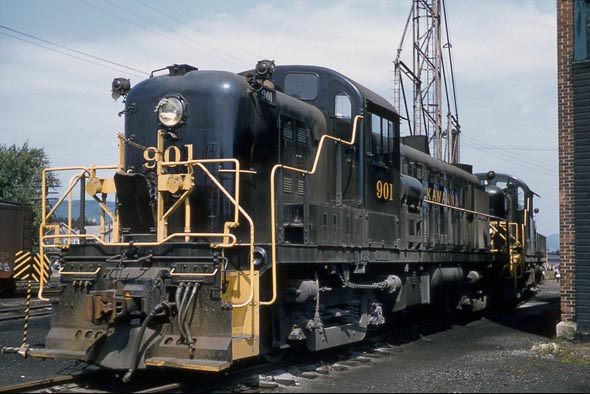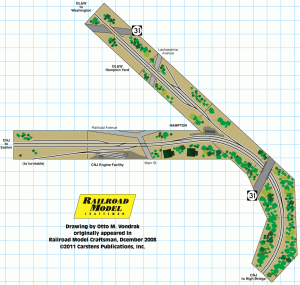by Otto M. Vondrak /photos as noted
When the editors first approached me about this project, they suggested looking at Hampton from the standpoint of a Free-mo module. American Free-mo is a standard that was originally developed from the European FREMO concept of a modular railroad that stresses realistic operation. Gone are the days of seemingly “patchwork quilts” of mismatched scenes typical of some modular set-ups. Free-mo essentially encourages the construction of whole layouts, emphasizing realistic operation. The modules are designed to be viewed and operated from both sides, and to mate up when turned 180 degrees. It is a truly revolutionary format that has caught on with many groups across the country. With this in mind, I looked at Hampton as a candidate for modular railroading.
I set about trying to capture the essential elements of the junction at Hampton, roughly mid-century. The scenes are greatly condensed, but still reflect the nature of this rural New Jersey junction. The Jersey Central mainline curves west, ducking under the Route 31 overpass and coming to the switch leading to the Lackawanna’s Hampton Yard. A single track branches off behind the passenger station, threading its way through backyards and farmland to a greatly diminished yard. I’ve reduced the yard to a running track (the DL&W branch to Washington, N.J.), two storage tracks, and a runaround with a tail. The tail track could be used to store the local DL&W switcher, or turned into a team track or local industry for added operational interest. The yard crosses over Lackawanna Avenue, and the DL&W continues towards Washington, crossing Route 31 on a massive steel and concrete bridge.
 Hampton Station was the original terminus of the D&LW from Scranton.
Hampton Station was the original terminus of the D&LW from Scranton.
Continuing west on the CNJ mainline, we pass the joint station at Hampton, cross Main Street, and pass through the remains of the old yard. I have retained one storage track for interchange traffic, and included a switchback lead to the CNJ’s minimal engine facilities. I wanted to include the turntable, but there simply wasn’t enough room (though one could create an add-on module for it). The engine facility consists of one track for servicing, and one track for supplies (oil and sand).
I imagine that you could operate this group of modules independently, with enough traffic to keep two operators busy. The addition of small staging yards on either end of the CNJ mainline would enhance operations, but would not be entirely necessary. A westbound CNJ wayfreight would start the day dropping off interchange traffic on the storage track just west of Hampton station (here’s where staging would come in handy, allowing our wayfreight to escape). Then, the local switcher would emerge from the engine facility, grab the cars, and head over to DL&W’s Hampton Yard. After picking up any cars destined for the CNJ, the switcher would deliver those cars to the storage track and return to the engine facility. Another operator could come in and then drill the DL&W cars, and perhaps make a set out on the tail track (or designated local industry). Finally, an eastbound CNJ wayfreight would stop at Hampton to pick up any cars destined for points east. While these four moves sound simple on the outset, they could easily keep two operators occupied for an afternoon.
While the configuration I designed requires eight modules, a clever modeler could probably eliminate one from each end the three ends. It would require a slight redesign of Hampton’s west end on the CNJ, and a realignment of the D&LW lead by Route 31, but it’s not outside the realm of possibility. This design could easily be integrated with existing Free-mo group layouts, providing a junction between a single track and double track route. What’s more, the modeler without a permanent space for his layout could easily set up a couple of modules for work or “testing” as desired. Simple “mini-mo” modules could be constructed to allow simple staging when operating alone. For more detailed information on the Free-mo standard, please visit www.free-mo.org.




